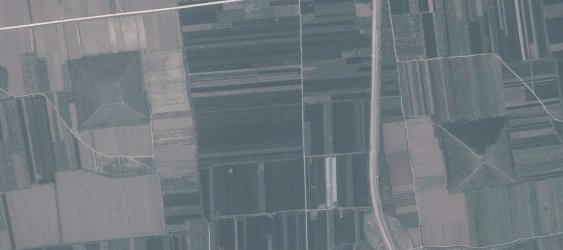
Near the city of Xi'an (known as Chang'an in the ancient past) there
are
some 90 to 100 pyramid-shaped structures that are known as burial
mounds for various early
emperors of China and their relatives. They are sometimes also called
the
Xi'anyang pyramids.
According to the great
Chinese historian Sima Qian (145-86 B.C.), the tomb of the emperor
Qin Shi Huangdi would be within a 140 feet high pyramid existing of
five terraces, below a man-made hill of 150 feet high that was
planted with grass and trees. Almost 700.000 workers would have worked
20 years to create the tomb of emperor Qin Shi Huangdi. According to
Sima Qian, the Earth first had been removed to the ground level and
after this a platform was poured with molten bronze. On top of this
platform there was placed a sarcophagus. Hundreds of water-courses,
the Chiang (the Yangtze River) and the Ho (the Yellow River) would
have been replicated within the tomb by flowing mercury and there
were machines which made it flow and circulate.
In 1974 there
had been found the famous "Terracotta
Army" of Qin Shi Huangdi near the place of this tomb,
existing of 8,000 life sized stone soldiers.

Two
of the still good visible pyramids in the province of Shaanxi
(Click
for a larger image)
The most discussed Chinese
pyramid is the Great White Pyramid, also known as the Maoling
Mausoleum. The Great White Pyramid would measure from 200 to 1,000
feet in height (the Great Pyramid of Egypt measures 450 feet in
height). Some other pyramids within the surrounding valleys were
rising to an elevation almost as great. According to ancient records
that were preserved in an old monastery near the Mongolian border,
the Great White Pyramid was already very old when the records were
made.
During World War II, the Great White Pyramid was noted
by the American pilot James Gaussman, who within that region was
forced to fly at a low altitude to unfreeze the fuel lines of his
plane. He reported:
"I flew around a mountain and then we came to a valley. Directly below was a gigantic white pyramid. It looked as if it were from a fairy tale. The pyramid was draped in shimmering white. It could have been metal, or some other form of stone. It was white on all sides. What was most curious about it was its capstone, a large piece of precious gem-like material. I was deeply moved by the colossal size of the thing."
Today these pyramids are
covered with soil and trees, perhaps to keep them out of sight or to
prevent further erosion. Today, access to this area is strictly
prohibited without explicit authorization. (The location of the Great
White Pyramid is to be found on this map
(Google Maps) and the location of the pyramids seen below
are here
on this map.)
The Chinese professor Wang Shiping believes
that these pyramids may have been arranged to mirror the shapes of
certain star constellations, just like the pyramids of Giza, and that
the pyramids may be part of a great system of sacred "dragon
lines" (or "ley lines". See the chapter: "Energy
Lines of the Earth").
In the year 2011 a team of nine
Chinese researchers from the Xinhua agency examined a certain
Xi'anyang pyramid (possibly the tomb of emperor Qin Shi Huangdi or
the Great White Pyramid). Here they explored three caves where they
found red-hued pipes that lead to both the mountain as to a nearby
salt water lake. Also above the caves there were found dozens of
pipes of varying diameters that were stuck into the mountainside,
where they likewise found many pieces of pipes shattered around.
Because the material of the pipes appeared to exist mostly of silicon
dioxide and calcium oxide, it is assumed that these pipes must be
very old; According to engineer Liu Shaolin they could be 12,000
years old. Could these be parts of the machines that Simi Qian was
talking about? (Source: beforeitsnews.com)
There
are some noteworthy similarities between the Chinese pyramids and
other pyramids in the world. First of all, the Chinese pyramids have
more or less flattened tops like the pyramids in Teotihuacan in
Mexico; Second, the pyramids of Giza in Egypt originally were - like
the White Pyramid - also white of color, because they were completely
covered with white casing stones; And third, the existence of liquid
mercury in pyramids in both China and Mexico.
In the beginning
of 2015, an announcement had been made that there also had been found
large quantities of liquid mercury at the end of a tunnel of the
third largest pyramid of Teotihuacan (the Temple of the Feathered
Serpent), known as the oldest pyramid in Mexico. Researchers believe
that its purpose was to symbolize an underworld river or lake, and
the finding of liquid mercury could suggest the existence of a king's
tomb or a ritual chamber. Earlier before this discovery, mercury had
also been found at three other sites in Central America; two of the
Mayans and one of the Olmecs. (Sources: www.theguardian.com
and
www.dailygrail.com)



